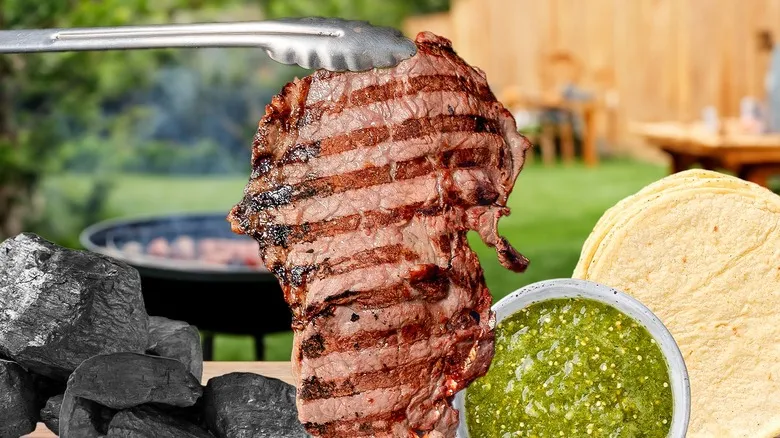Arrachera (skirt steak) is king
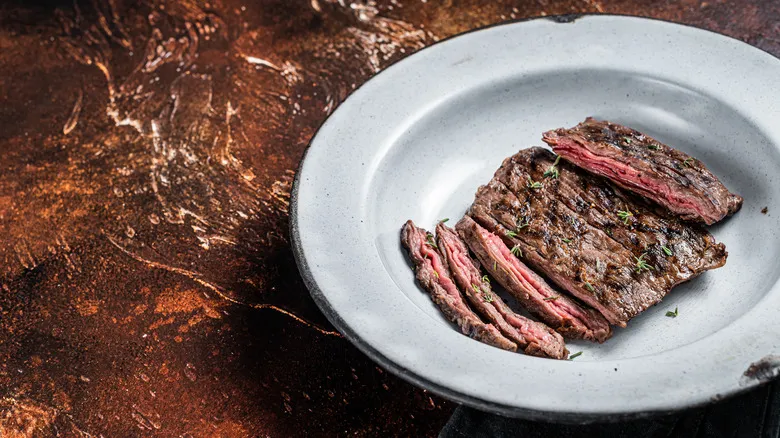
When we consulted with culinary experts about the ideal steak cut for carne asada, almost every chef pointed to one specific option as their favorite. David Figueroa, chef and co-founder of Melinda's Foods, stated, "There's no mystery here — it's skirt steak all the way, every time. Flank steak is another possibility, but it usually has less marbling and a slightly more 'livery' taste. Skirt steak, however, delivers that rich beefy flavor we all desire."
Commonly referred to as arrachera, skirt steak is sourced from the chest and abdominal region of the cow, situated below the ribs. This long, flat cut features a unique grain pattern. There are several reasons why skirt steak is an excellent choice for carne asada. Firstly, its thinness and pronounced grain make it ideal for absorbing marinades. Additionally, skirt steak is packed with flavor and contains a good amount of fat, which helps keep it juicy when grilled correctly. Best of all, it's a delicious steak cut that remains budget-friendly.
Your butcher can help you find alternative cuts if you can't find skirt steak
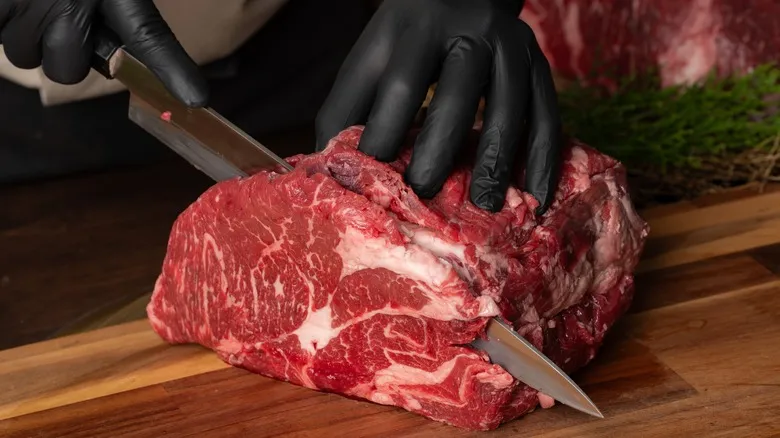
Having trouble locating skirt steak at your nearby grocery store or butcher? Your butcher might assist you in finding alternative cuts that share similar texture and flavor profiles. For instance, flank steak is another option sourced from the cow's abdominal region. The primary distinction between skirt steak and flank steak lies in their size—flank steak is generally shorter and thicker than skirt steak. Wes Avila, chef at MXO Mexican Steakhouse in West Hollywood, shared with Chowhound, "When prepared properly, flank steak is both flavorful and tender." Like skirt steak, flank steak can be delicious when marinated and grilled at high temperatures.
"Sirloin is also an excellent choice if you're looking for a more economical option," Avila noted. Sirloin is taken from an area near the cow's hind legs and is usually categorized into top sirloin and bottom sirloin. Your butcher might suggest flap steak, which is derived from the bottom sirloin. Also known as bavette, this is another thin cut that boasts a rich, beefy flavor and cooks beautifully over high heat, whether on a grill or in a cast iron skillet.
A good marinade is the key to tender, juicy meat

A marinade is an excellent way to infuse flavor into your carne asada while also tenderizing the meat. Ingredients with acidity, such as citrus juice and vinegar, can help break down the meat fibers, making it more tender. Oil adds moisture, while herbs and spices contribute depth of flavor. Many chefs use traditional Mexican ingredients to craft their carne asada marinades. For instance, Yvette Marquez-Sharpnack of Muy Bueno shares, "My marinade features butter, tequila, lemon and lime juice, thyme, serrano chilies, garlic, cilantro, and onion."
Wes Avila also provided some insights for creating a delicious marinade. He noted, "A traditional carne asada marinade typically includes lime juice, orange juice, garlic, cilantro, cumin, chili powder, and either soy sauce or Worcestershire sauce. Some variations may incorporate jalapeños or other spices for added heat." Feel free to get creative with your ingredients; for example, you might replace citrus juice with vinegar or add honey or brown sugar for a hint of sweetness and to enhance caramelization. Avila also suggests using fresh ingredients to achieve the best flavor.
Marination time matters
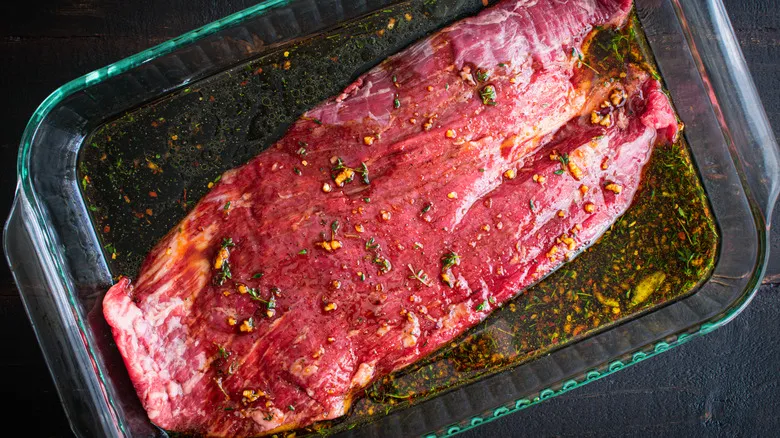
After you've prepared your marinade and generously coated your steak with those delicious liquids and spices, it's important to let the meat rest in the marinade for a sufficient amount of time. This allows it to absorb the flavors and enables the acidic components to work their magic. Ingredients like citrus juice and vinegar help break down the proteins in the meat through a process known as denaturation. This process has two main effects: it tenderizes the meat and loosens its structure, which helps the marinade flavors penetrate more effectively.
While there isn't a strict guideline for how long to marinate your steak for carne asada, many chefs suggest a minimum of one hour. Wes Avila mentioned, "Ideally, the steak should be marinated for at least one to four hours. However, marinating overnight can further enhance the flavor without significantly compromising the texture." Just be cautious not to marinate the meat for too long; anything beyond 24 hours can overly break down the proteins, leading to a mushy or grainy texture.
Charcoal is a good way to go

Numerous chefs will assert that the best way to prepare carne asada is by grilling it over open flames, with charcoal being the preferred choice over gas every time. This preference stems from the fact that charcoal infuses the meat with a delightful smokiness that gas grills simply cannot replicate. While grilling with charcoal may be messier than using gas, many believe the enhanced flavors and aromas make it worthwhile.
Charcoal offers more than just flavor; it also provides the intense heat necessary for perfectly cooked carne asada. David Figueroa shared, "A quality gas grill can suffice, but they often have cooler areas. Carne asada requires consistent heat along the entire length of the steak, and charcoal achieves that sear better than any other method." A common mistake people make when grilling with charcoal is not allowing the coals to reach the right temperature. It's essential to ensure that the coals are glowing white hot throughout and generating significant heat before placing the meat on the grill.
Wood can impart amazing flavors
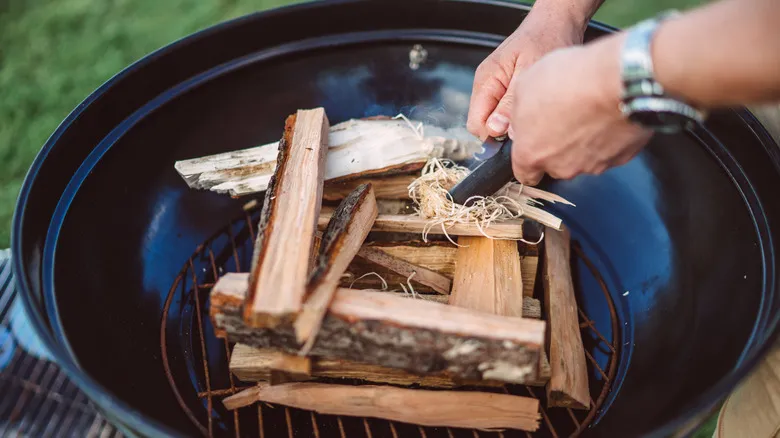
Charcoal is excellent for grilling, but it can create quite a mess. If you want to steer clear of the soot, consider using wood as your fuel. Wood is completely natural, easy to ignite, and generates a significant amount of heat. In fact, wood can burn hotter than charcoal, which is ideal for quickly searing carne asada. Additionally, the smoke from the wood can impart delightful flavors to the meat. Wes Avila shared, "Nothing compares to cooking over a wood fire, especially mesquite for the best flavor."
One of the advantages of grilling with wood is that various types provide distinct flavors. As Avila pointed out, mesquite is one of the top choices for grilling carne asada due to its bold, earthy taste. Hickory is another favored option, known for its rich flavor that many liken to bacon. Wood from fruit trees can introduce a hint of sweetness, while oak offers a milder, more subtle smoky essence. Just make sure to use well-dried firewood to ensure it burns efficiently and delivers the best flavor.
No grill? Use a cast iron pan
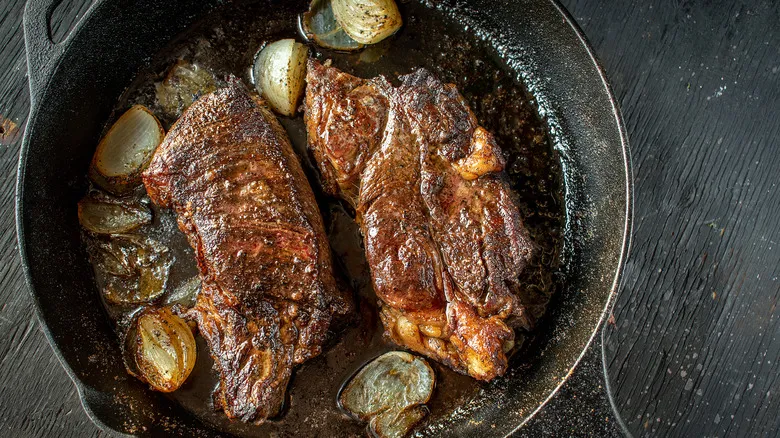
Unfortunately, many of us lack access to a grill. However, Yvette Marquez-Sharpnack shared with Chowhound that this shouldn't be a concern. "Just use a cast iron grill pan and cook on your stovetop," she advised. There are several reasons why a cast iron pan is essential for achieving a perfectly seared steak. Firstly, cast iron evenly distributes heat throughout the pan and retains it well, even after being removed from the heat source. Additionally, a well-seasoned pan will help prevent the steak from sticking.
When we refer to seasoning a cast iron pan, we’re not talking about adding spices. Instead, cast iron seasoning involves creating a layer of oil that is baked into the pan, resulting in a smooth, non-stick surface. The seasoning process is quite straightforward—simply apply a thin layer of oil to a clean, rust-free pan and bake it in the oven.
Once your cast iron pan is properly seasoned, you can begin preparing your carne asada. Marquez-Sharpnack suggested allowing the steak to reach room temperature before cooking. While the meat warms up, preheat the cast iron pan until it’s extremely hot. This high temperature will help achieve a beautiful sear on your meat.
Blazing hot heat is essential
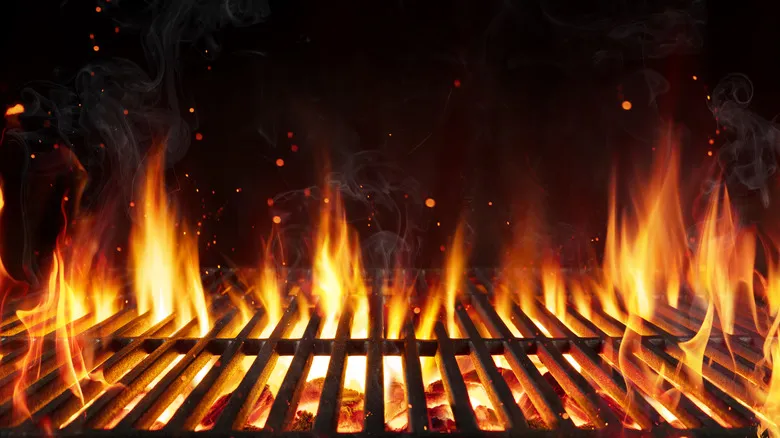
You might have observed a common theme here: high heat is crucial for achieving the perfect carne asada. David Figueroa explains, "If your coals (or grill) aren't at their maximum temperature, you're missing out on that ideal char. High heat is necessary for the magic to occur." Since cuts like skirt steak and flank steak are thin, they cook rapidly, leaving little time to develop a good crust. This is where high heat becomes important.
The delightful brown, charred crust on steak is a result of the Maillard reaction, a chemical process in which the proteins and sugars in the meat react to high temperatures, transforming its color from red to brown. When executed properly, this process also yields a pleasing crispy texture.
Figueroa emphasizes that the secret to initiating the Maillard reaction is intense heat. He advises, "Get that fire roaring and position your cooking grate close to the coals. For an extra charred finish, I sometimes clear off the coals and place the meat directly on them for one to two minutes per side, depending on thickness. The goal is to achieve that perfect medium rare."
Don't move your steak around while it's cooking
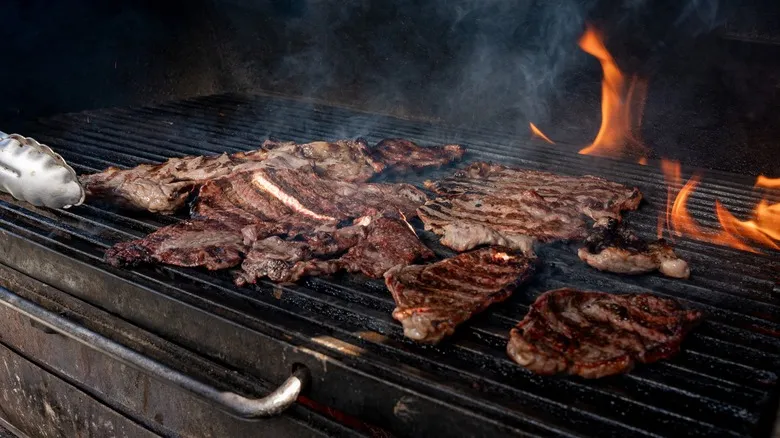
Whether you're grilling or using a cast-iron skillet, many chefs recommend minimizing the movement of the steak. Wes Avila suggests, "Refrain from flipping it too frequently, as this can hinder a proper sear." This advice aligns with the principles of the Maillard reaction, which requires high heat to convert proteins and sugars into a delicious crust. If you don't allow the heat sufficient time to work, how can you expect the reaction to occur fully?
One concern some people have about not flipping the steak often is the potential for uneven cooking. Fortunately, there are strategies to address this. First, ensure the steak is at room temperature, allowing the meat to relax. When cold meat hits a hot surface, it can cause the fibers to tighten, leading to uneven cooking. Additionally, patting the steak dry can be beneficial. Excess moisture on the meat's surface can create steam, preventing a crust from forming in certain areas.
Beware of overcooking your meat
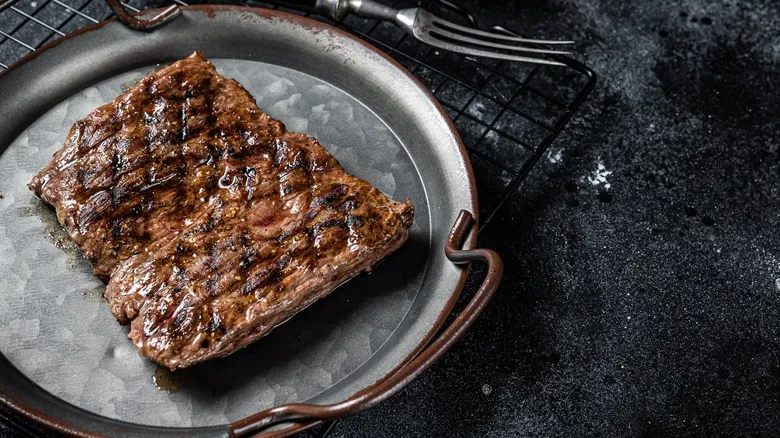
If you ask any chef what the most common mistake with steak is, the majority will likely say it's overcooking the meat. This is particularly true for carne asada. As previously mentioned, thin cuts like flank and skirt steak cook very quickly. If you leave them on the grill for too long, you risk ending up with tough, dry meat. No matter how spicy your salsa is or how fresh your pico de gallo tastes, no sauce can mask the flavor of chewy, overcooked carne asada.
Wes Avila advises that the best way to avoid overcooking meat is to use a meat thermometer. "Aim for a medium-rare temperature of about 130°F," he suggests. Keep in mind that the steak will continue to cook even after you remove it from the grill. Generally, you can expect the temperature to rise by about five to ten degrees. Therefore, you should take it off the heat when it reaches around 125°F. If you prefer your meat rare, medium, or well-done, you can refer to this useful steak temperature guide to determine the ideal cooking temperature for your meat.
Let your meat rest before cutting it
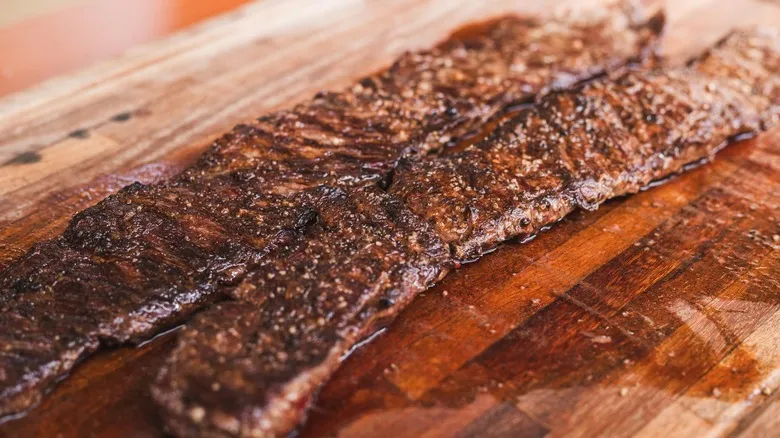
Overcooking isn't the sole culprit for your carne asada turning out dry. A significant error is slicing into the meat immediately after it comes off the grill. It's essential to let the meat rest after cooking. There are two key reasons for this. First, during cooking, the muscle fibers contract and the juices rise to the surface. Allowing the meat to rest helps it relax and lets the juices redistribute throughout. Additionally, meat continues to cook even after being removed from the heat. If you cut into it too soon, you'll not only lose those valuable juices but might also end up with meat that’s not fully cooked.
Since carne asada is usually prepared with thinner cuts of steak, letting it rest for five to ten minutes should be sufficient for the juices to redistribute and for the meat to finish cooking. As the late, great Anthony Bourdain wisely advised in a video on the "No Reservations" Facebook page, "Don't wrap it in foil, don't cover it, don't poke it, don't prod it. Don't even look at it. Just let it sit there. Leave it alone, and you will be rewarded."
Slice your steak against the grain
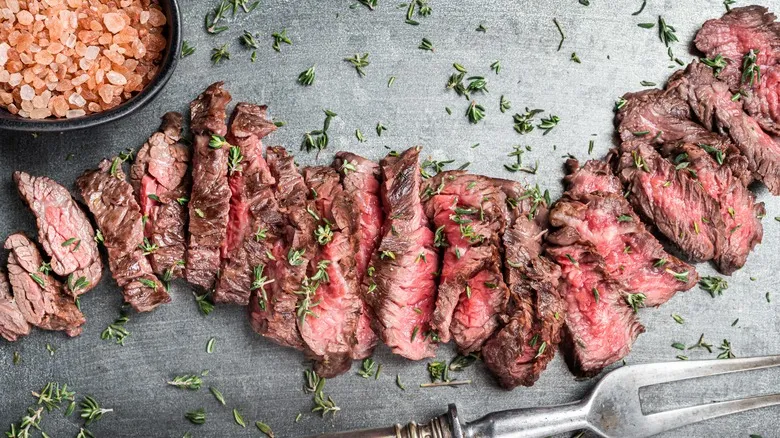
You've cooked your meat to perfection and allowed it to rest adequately, letting the juices redistribute and the meat finish cooking. Now, it's time to slice and serve. This is another chance to enhance the meat's quality. Experts advise that you should always cut against the grain. Wes Avila mentioned, "This shortens the muscle fibers, resulting in a more tender bite."
The grain of the meat refers to the fine lines that run through it, which are the muscle fibers that typically align either vertically or horizontally in a steak. When slicing, aim to cut perpendicular to these fibers to break them up, making the steak less chewy. Fortunately, cuts like skirt steak and flank steak have prominent grains, making it easy to identify the direction of the muscle fibers and the correct way to slice.
You can't have carne asada without tortillas and salsa
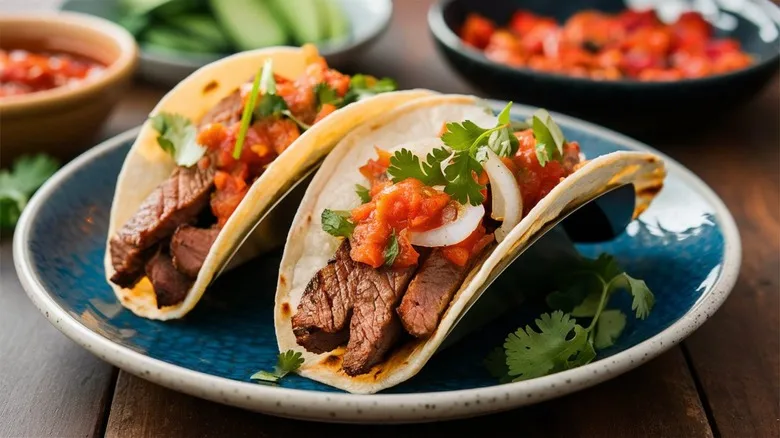
You can enjoy carne asada by itself, but many believe the dish is incomplete without tortillas and salsa. The traditional method of enjoying carne asada involves placing slices of meat in a tortilla and adding a spoonful or two of salsa on top. Simply fold it like a taco, and you're all set.
Now, the question arises: corn or flour tortillas? Some will insist that corn is the only option. After all, corn is a staple in Mexican cuisine, and corn tortillas are the preferred choice for tacos across the nation. However, flour tortillas certainly have their place as well, especially in many northern Mexican states. Ultimately, it boils down to your personal taste and what you have on hand.
While your tortilla options may be limited, the variety of salsas is virtually endless. You can choose from red, green, spicy, or mild salsa. Yvette Marquez-Sharpnack mentioned, "Some of my favorite toppings include salsa verde, tomatillo avocado salsa, and chile de arbol salsa."
Simple, fresh sides are best
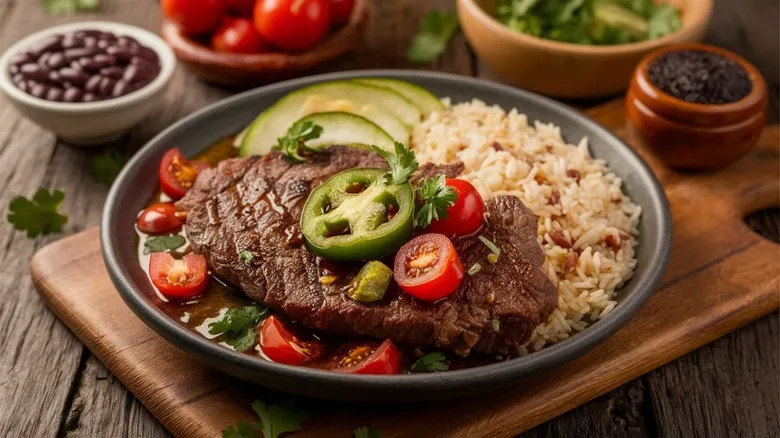
In addition to tortillas and salsa, there are a variety of side dishes and toppings that pair wonderfully with carne asada. David Figueroa shared a valuable tip regarding sides: "Keep it simple and fresh — let the carne asada take center stage!" It's important to remember that the bold, meaty flavors of the carne asada are the star of the meal, so opt for vibrant ingredients that enhance its richness and earthiness without overshadowing it.
Figueroa enjoys serving his carne asada alongside straightforward dishes like stewed beans, white rice, avocado, and a zesty salad complemented by fried plantains. Yvette Marquez-Sharpnack prefers to include borracho beans (beer and bacon-infused "drunken" beans), cilantro lime rice, and grilled green onions in her meal. Other potential side dishes and toppings might feature guacamole, pico de gallo, queso fresco, diced onions, cilantro, lime wedges, and grilled vegetables. And of course, carne asada is always best enjoyed with a cold beer!
Recommended
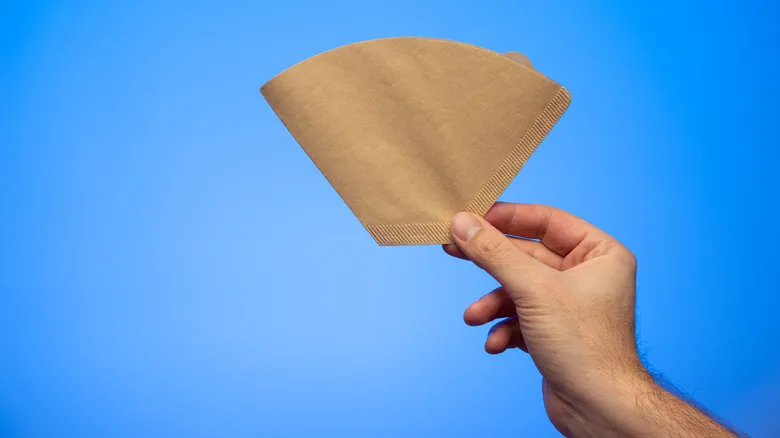
Make Your Coffee Filter Fit Your Machine With A Simple Folding Hack
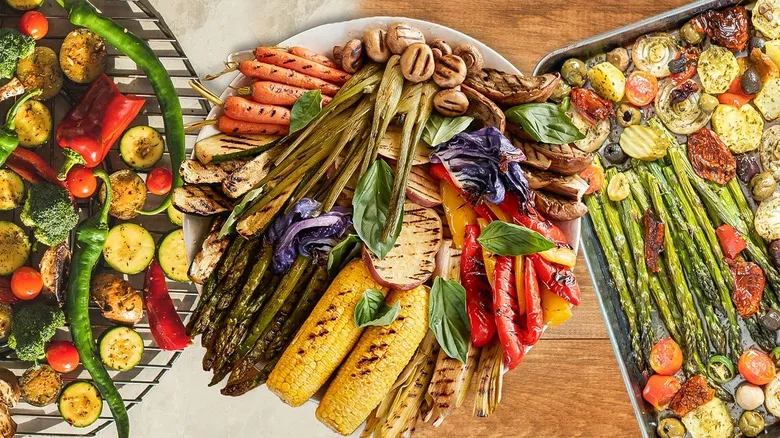
13 Tips You Need To Grill Better Vegetables

Resetting Your Nespresso Machine Is Easier Than You Think
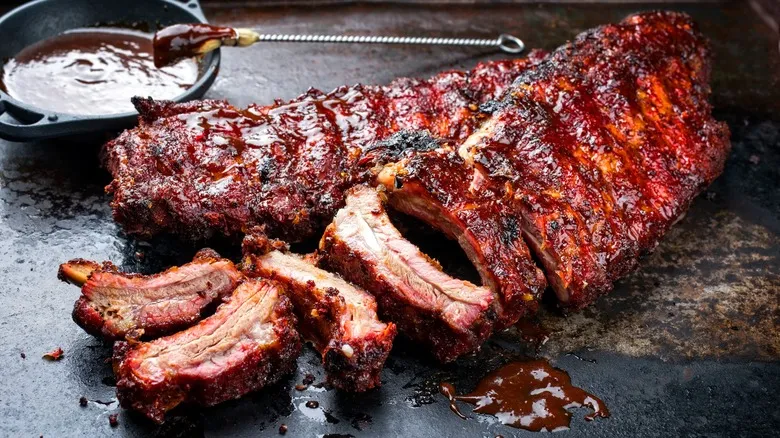
Too Many Regional Styles At A Barbecue Restaurant Is An Expert Red Flag
Next up

